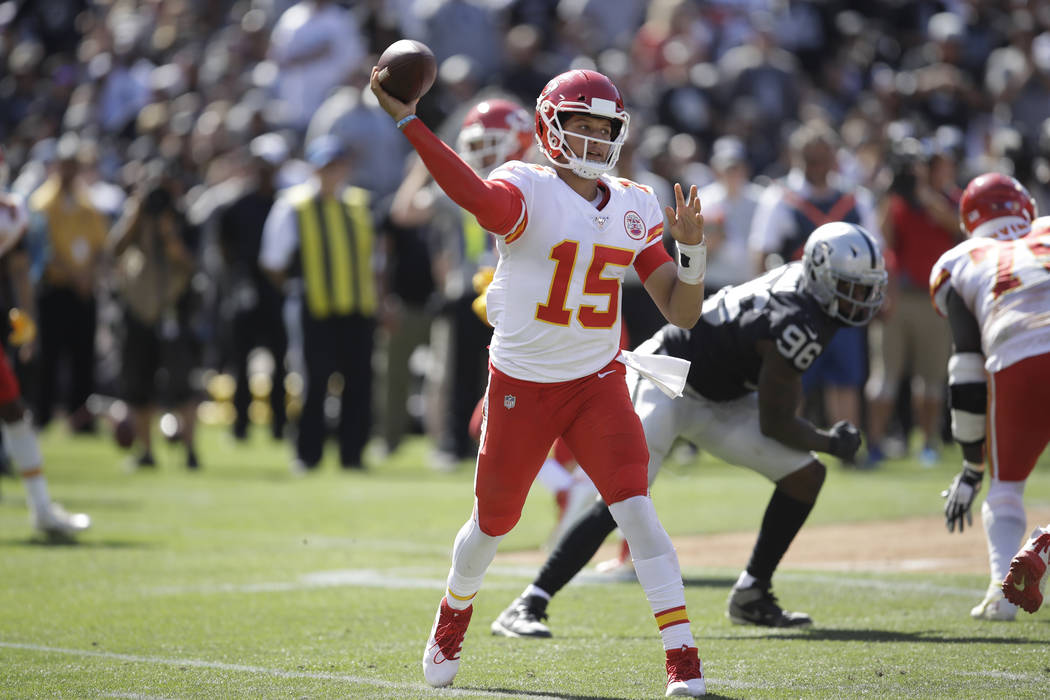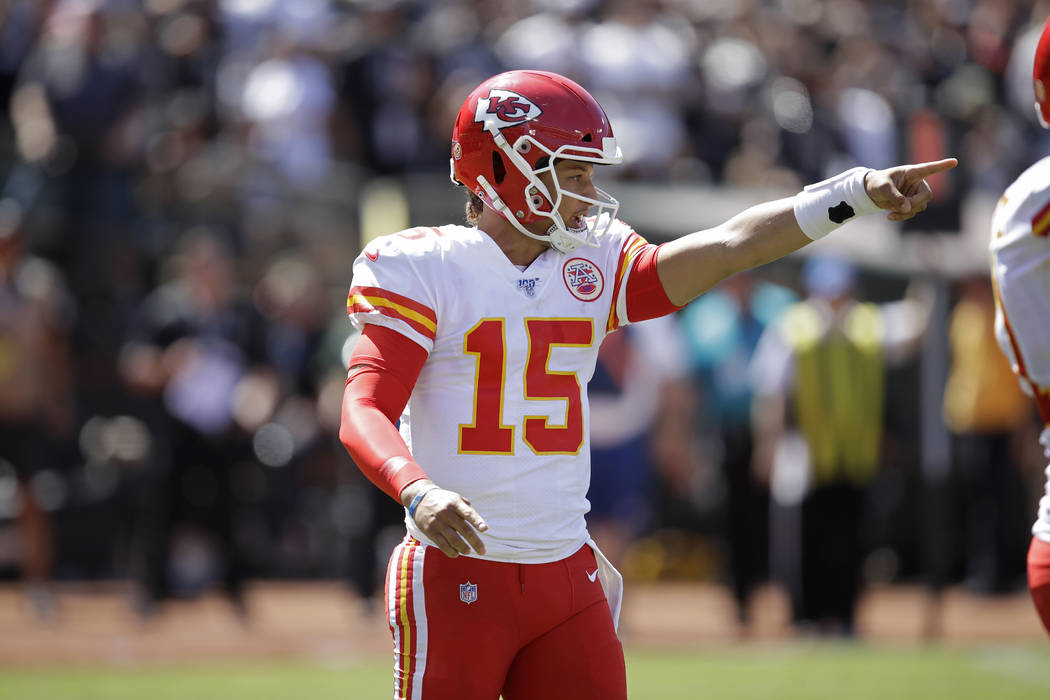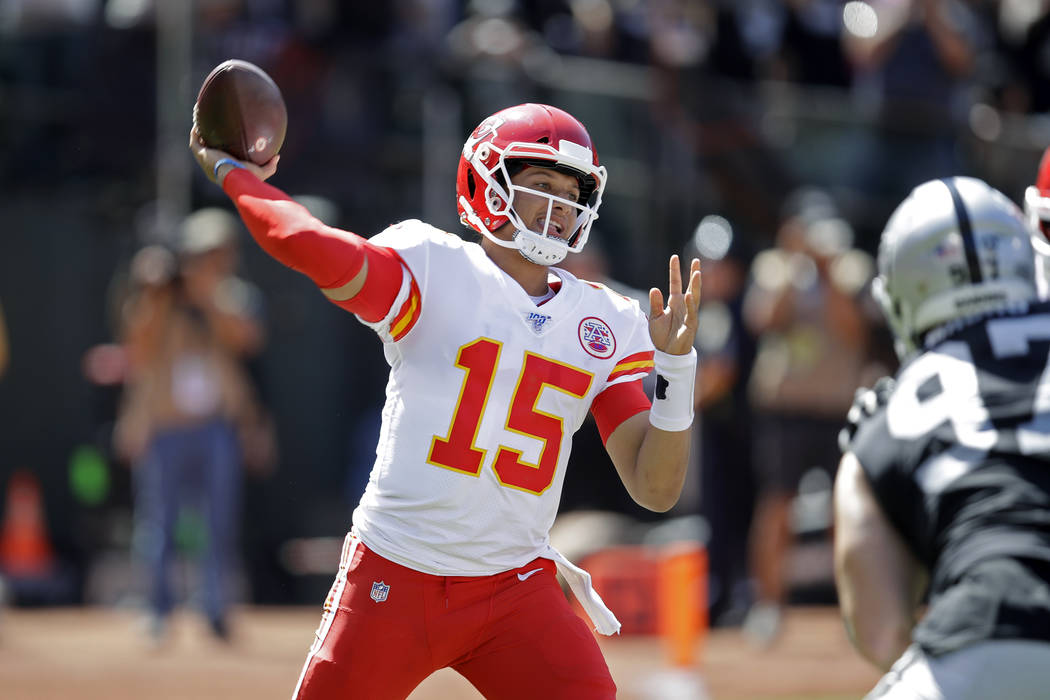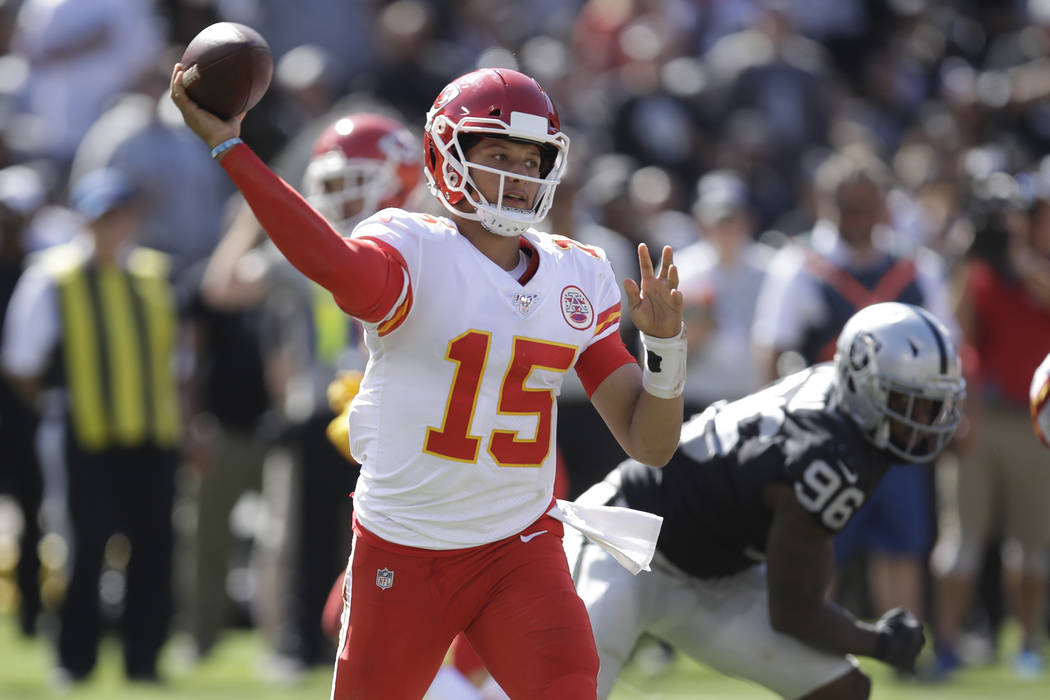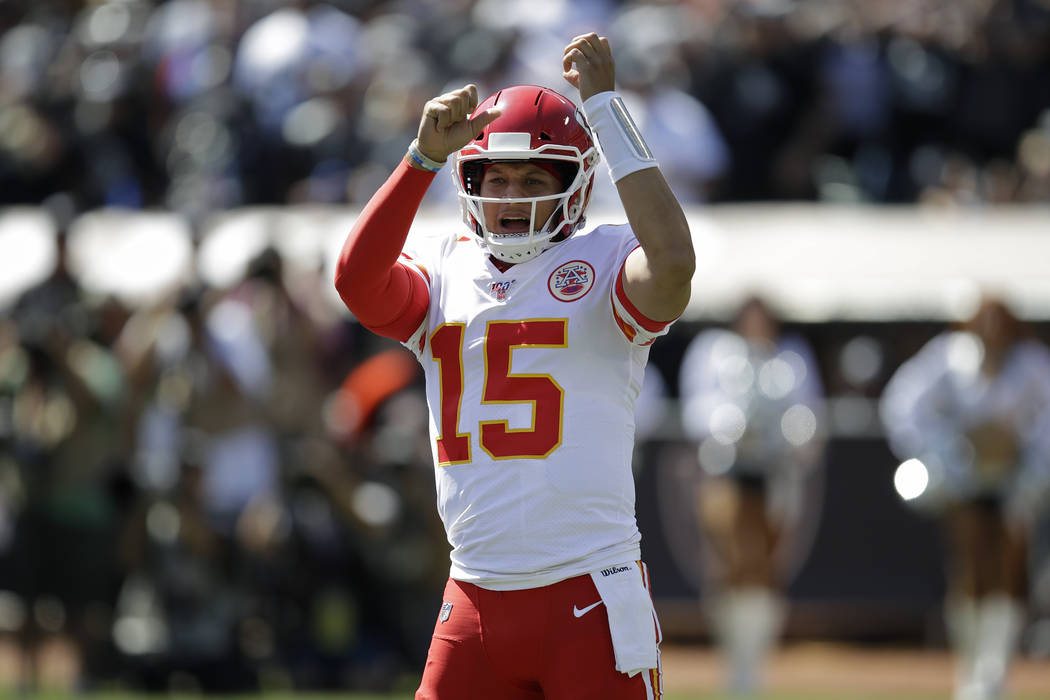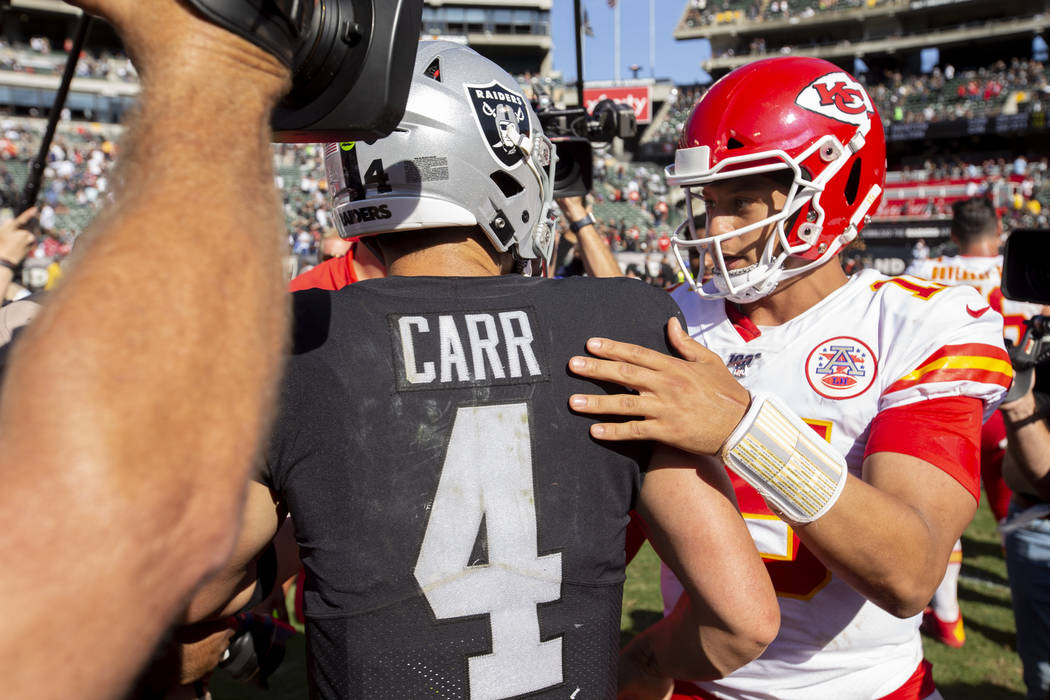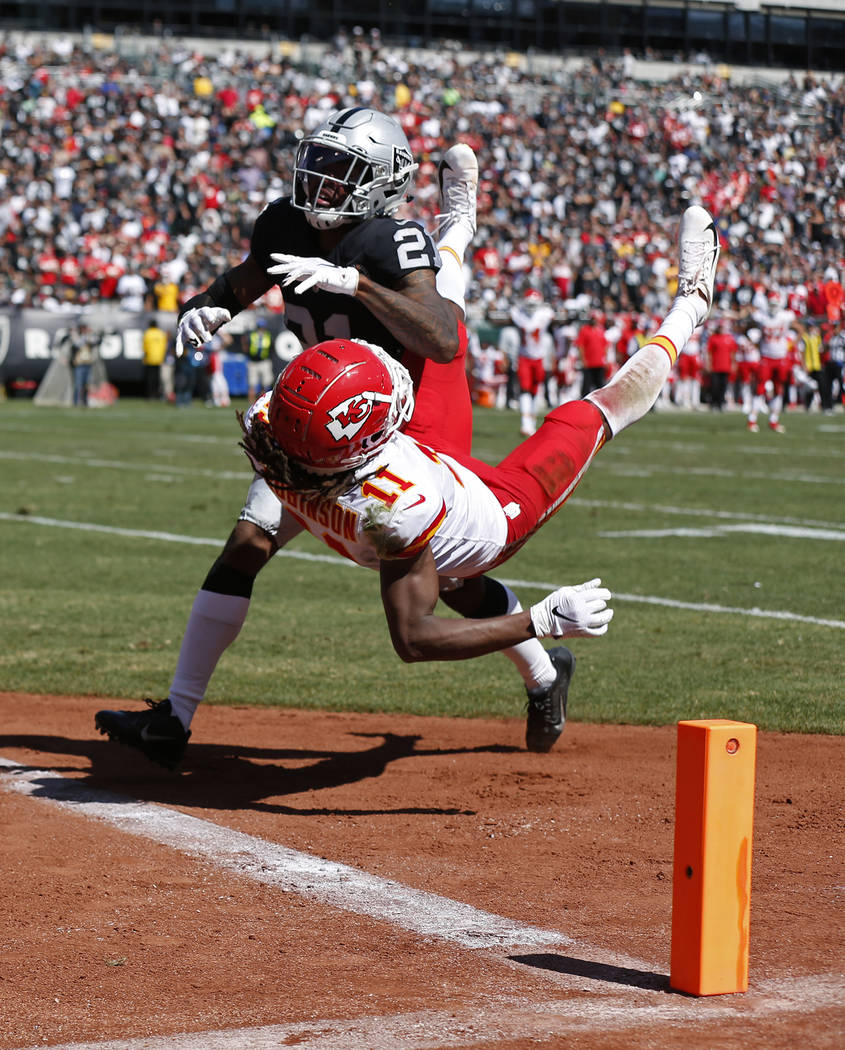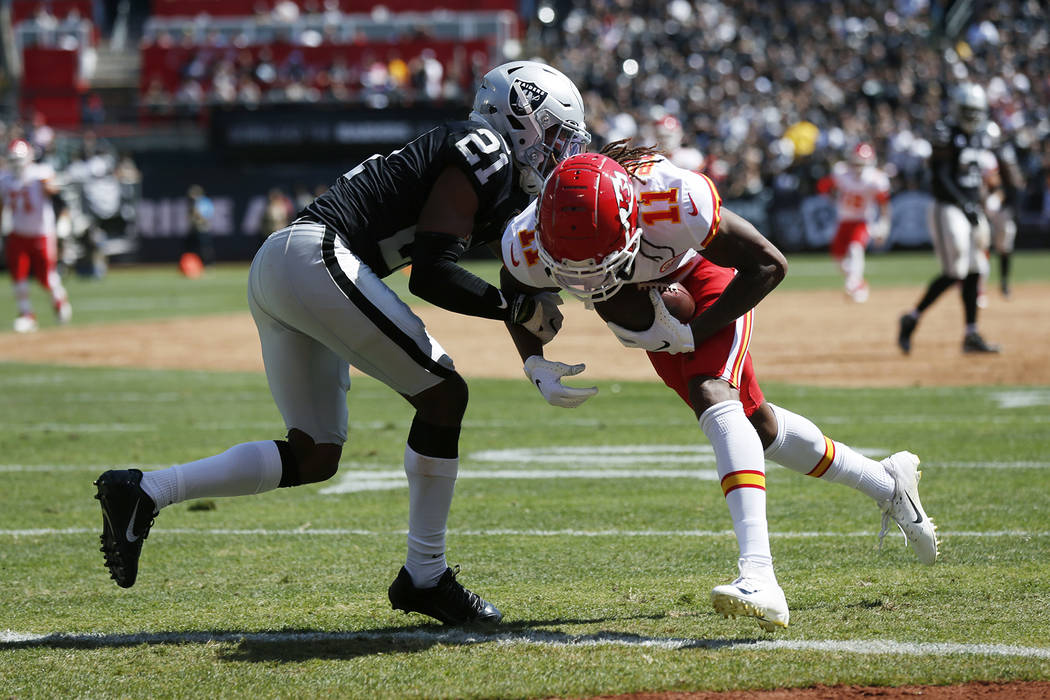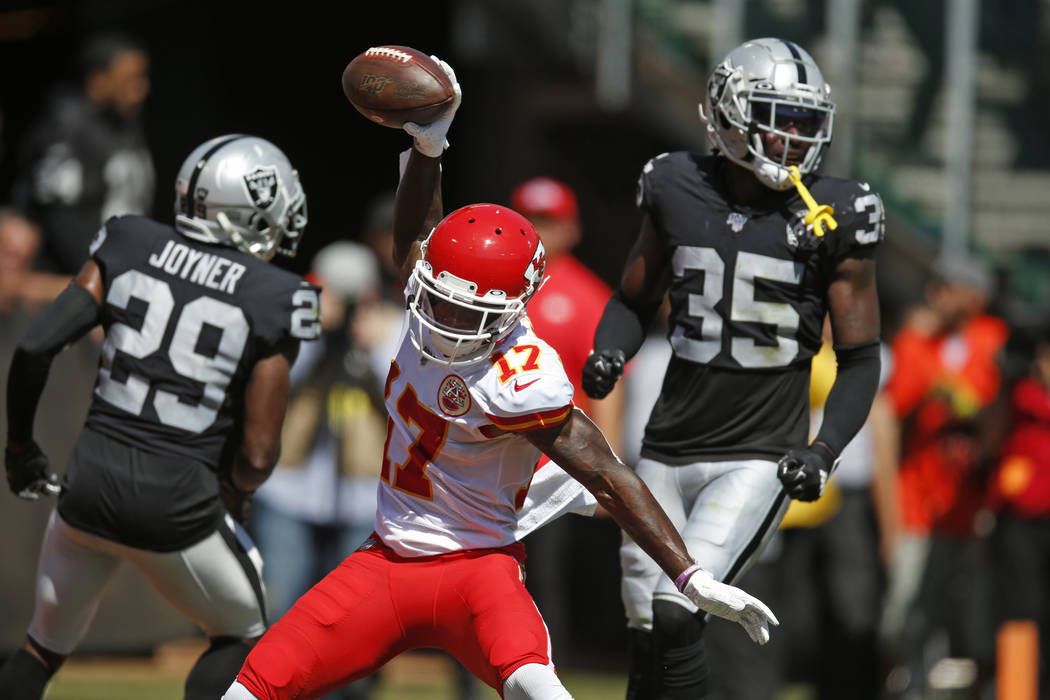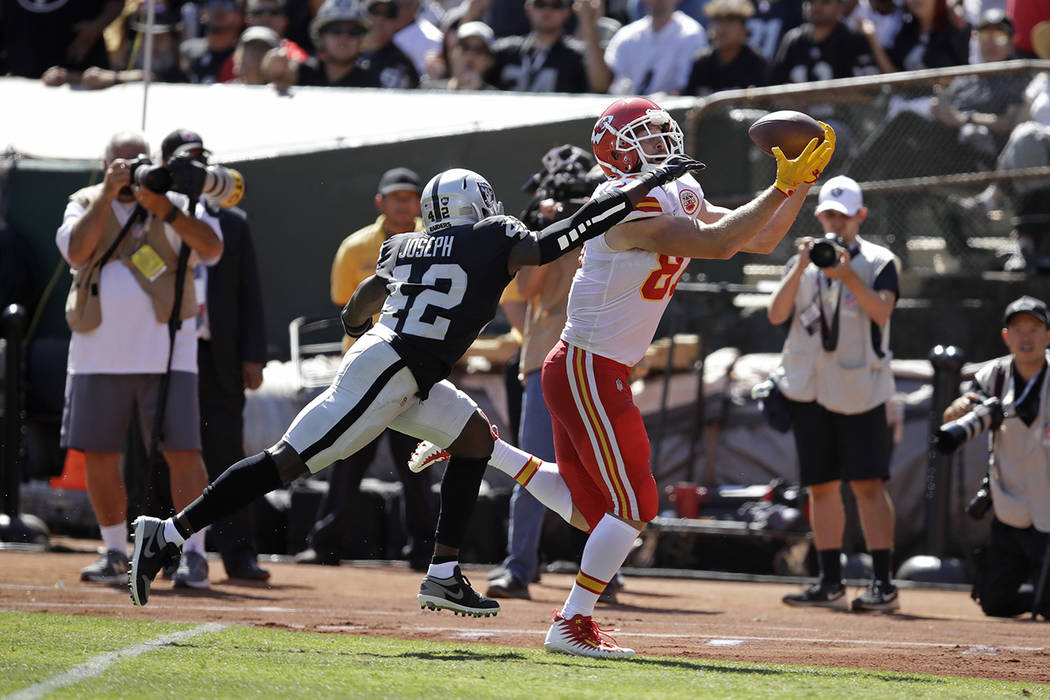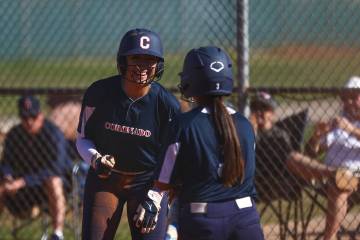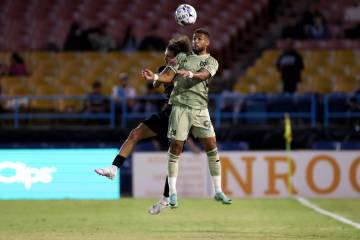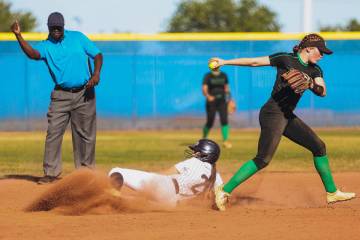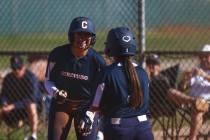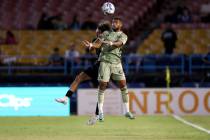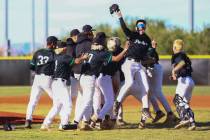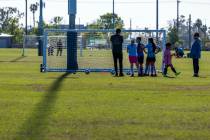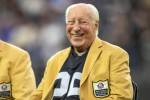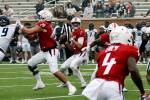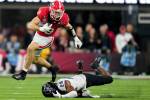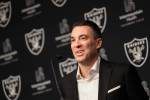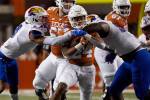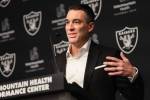The 2nd-quarter sequence that buried Raiders against Chiefs
ALAMEDA, Calif — It was as swift as it was powerful, turning a game the Raiders led 10-0 into a 28-10 defeat.
On September 15th, the Raiders were leveled by a four-touchdown Kansas City run over a 14-minute stretch of the second quarter. The Chiefs’ rally put on display several of their powerful offensive weapons, none more devastating than quarterback Patrick Mahomes.
But it also revealed flaws that the Raiders will need to correct before the AFC West rivals meet again on Sunday in Kansas City.
Specifically, they need to improve a secondary that didn’t play physically enough and continually lost track of Chiefs receivers, and a pass rush that was unable to apply pressure on Mahomes.
But they also need to improve an offense that failed to help out a vulnerable defense by committing untimely mental mistakes that sabotaged potential scoring opportunities and short-circuited drives.
The lack of complementary football by the offense resulted in too many chances for Mahomes to exploit a flawed defense. He made the Raiders pay with a spectacular second quarter, throwing for 273 yards and four touchdowns to establish a Chiefs record for touchdown throws in a quarter. Mahomes finished with 313 yards on 18 of 26 passing in the first half and a quarterback rating of 149.5.
As the second-place Raiders (6-5) prepare to face the first-place Chiefs (7-4), they do so with a pass defense even more vulnerable than in the first meeting, thanks to injuries and personnel changes.
The Raiders’ starting secondary against the Chiefs consisted of Gareon Conley, Daryl Worley and Lamarcus Joyner at cornerback and Karl Joseph and Curtis Riley at safety. In the rematch, due to injuries and personnel moves, it’s expected to be Trayvon Mullen and Nevin Lawson at cornerback and Riley, Erik Harris and D.J. Swearinger rotating at safety. Joyner, who has missed the last two games with a hamstring injury, remains uncertain for Sunday.
In addition, physical linebacker Vontaze Burfict, who was the defensive signal-caller in that first meeting, was suspended for the remainder of the year on September 30 for his helmet-to-helmet hit on Indianapolis Colts tight end Jack Doyle. Tahir Whitehead has taken over for Burfict.
Certainly it is on to the defense to make the necessary adjustments and play better on Sunday - and that starts with being more physical against Kansas City receivers at the line of scrimmage, communicating better in the secondary, especially before the snap in order to assign coverage responsibilities, and getting more heat on Mahomes. That is even more important this week as Tyreek Hill, who did not play in the first matchup, will be on the field for the Chiefs on Sunday.
But it also means eliminating the mental errors the Raiders committed on offense and sustaining more long drives to keep Mahomes and the Chiefs offense on the sidelines.
“We failed to do that offensively,” Gruden said of the first matchup on Monday. “And you got to credit this Mahomes now. He’s not only got great receivers, he’s got one heck of an arm. He makes and attempts throws I have not seen before. When he gets hot, he can really hurt you.”
Here’s a closer look at what happened last September, and what the Raiders have to do to avoid a repeat on Sunday:
Eliminate the big play
The Raiders were victimized by Mahomes with big-strike plays that took advantage of miscommunication on the back end of the defense, poor execution and some questionable defensive calls.
On the 44-yard touchdown strike to Demarcus Robinson that cut the lead to 10-7, the Raiders lined up in a linebacker blitz look. But when the Chiefs put running back Damien Williams, who was split wide as a receiver, in motion, it forced the linebackers to back up as potential blitzers. Unfortunately, the Raiders remained in zero coverage, which meant there was no safety help behind the cornerbacks. Conley wasn’t aware of that and let Robinson release off the line of scrimmage. The result was Robinson sprinting free down the middle of the field for an easy pitch and catch from Mahomes for the touchdown.
A similar misplay occurred later in the second quarter on Mahomes’ 42-yard touchdown throw to Mecole Hardman that gave the Chiefs a 14-10 lead. Joyner had coverage responsibility on Hardman, who was lined up in the slot. But Joyner got caught flat-footed trying to communicate to a teammate just as the ball was snapped. To make matters worse, Riley, playing safety, wasn’t at the right depth and hesitated just long enough for Hardman to sprint right past him. As a result, Hardman had a step on both Joyner and Riley and Mahomes found him for an easy touchdown.
“We just got to keep the ball in front of us,” Gruden said. “We can’t give up the vertical bombs. We just can’t do it. We’ve got to (focus) hard this week on preventing that.”
When given the oppportunity, finish them off
After Derek Carr threw four yards to Tyrell Williams for a touchdown to go up 10-0 with just under five minutes to play in the first quarter, the Raiders’ defense stonewalled the Chiefs on their ensuing possession to force a punt. Dwayne Harris’ 11-yard return set up the Raider perfectly at their own 40-yard line.
One more big punch might have given the Raiders control of the game.
Instead, they gained just two yards on a three-and-out that took all of 56 seconds. The Raiders were the victims of a missed defensive holding call when Chiefs cornerback Kyle Fuller held wide receiver Hunter Renfrow as he ran a third-down route - a play Jon Gruden challenged as a possible defensive pass interference. But holding infractions don’t fall under the challenge category, so the call stood and the Raiders had to punt on fourth down.
The Chiefs cashed in on their next drive with the TD pass from Mahomes to Robinson.
The Raiders’ next three possessions ended in punts. None lasted more than four plays or covered more than 21 yards or spanned more than 2:31. The effect that had on a tiring defense was obvious, and the Chiefs took advantage with three more touchdowns to go up 28-10.
“We needed to, I think, finish a couple of drives there in the first half, take advantage of a 10-point lead and field position in front of our home crowd,” Gruden said on Monday.
Avoid untimely penalties
The Raiders hurt themselves with mental errors, being called for two offensive false starts and a defensive neutral zone infraction on three successive drives. Making it worse was that all three occurred on third downs.
After the touchdown pass from Mahomes to Robinson, the Raiders drove from their 25-yard-line to their 41 and faced a manageable third-and-six. Renfrow, though, was called for a false start to push the Raiders back five yards and set up a much more difficult third-and-11 from the 36. On the next play, Carr scrambled 10 yards - diving at the last second while fighting for the first down - but came up a yard short to force another punt.
On the Chiefs’ ensuing’ drive, they faced a third-and-four from their own 25. A stop by the Raiders would have meant a Kansas City punt and likely favorable field position. Only rookie defensive linemen Clelin Ferrell was penalized for lining up in the neutral zone to give the Chiefs a first down.
Renfrow’s penalty cost the Raiders a chance to possibly extend a drive. Ferrell’s lapse cost them a chance to flip the field and give Carr and the offense a chance to work with a shorter field.
Later in the second quarter, Raiders tackle Trent Brown was called for a false start on third-and-12 from the Raiders’ 38 to make it third-and-17 from the 33. Carr then threw for 12 yards to Darren Waller. Sans the Williams penalty, that would have been enough for first down. With it, the Raiders came up short.
Again, another chance to move the chains was sabotaged.
Contact Vincent Bonsignore at vbonsignore@reviewjournal.com. Follow @VinnyBonsignore on Twitter.



